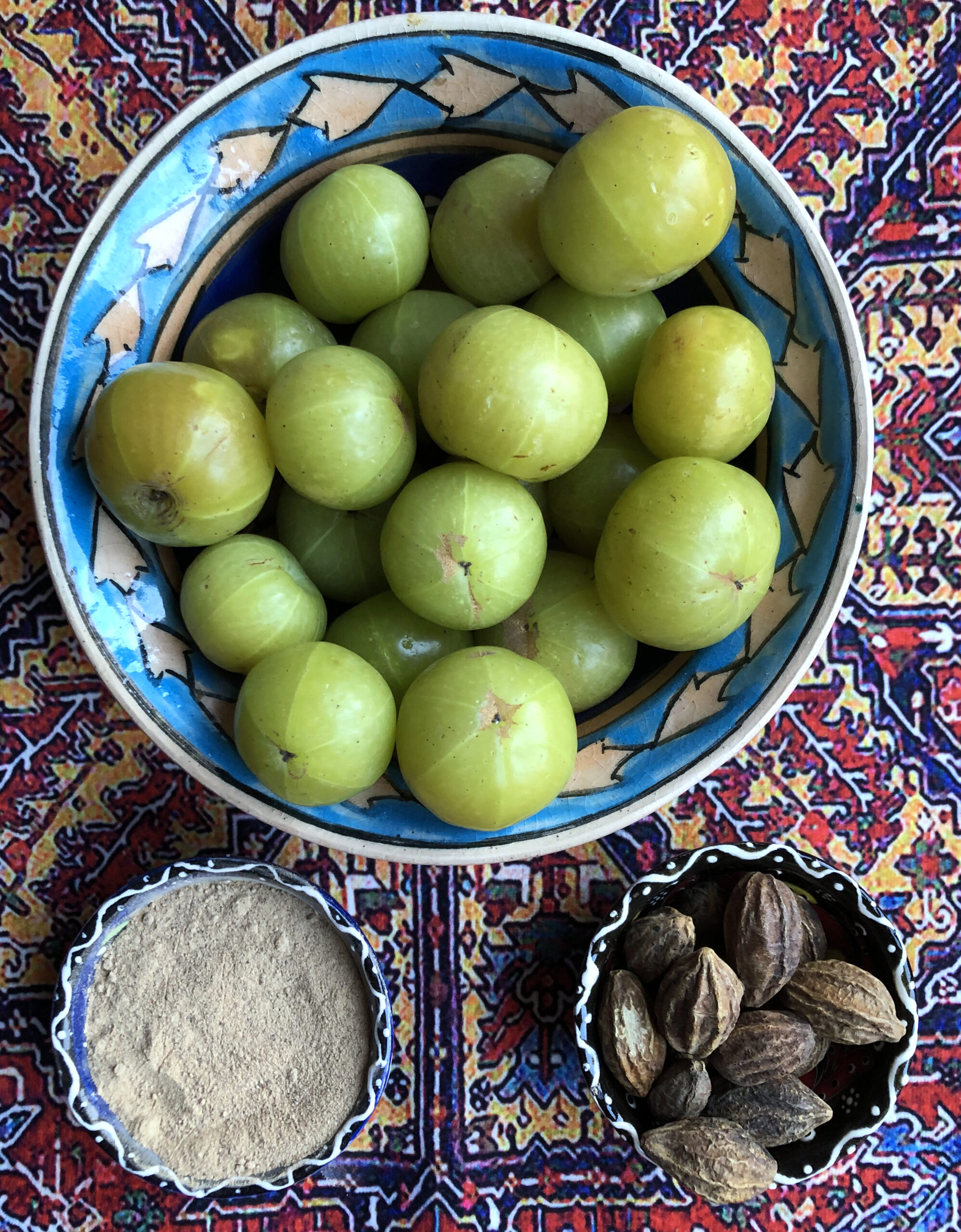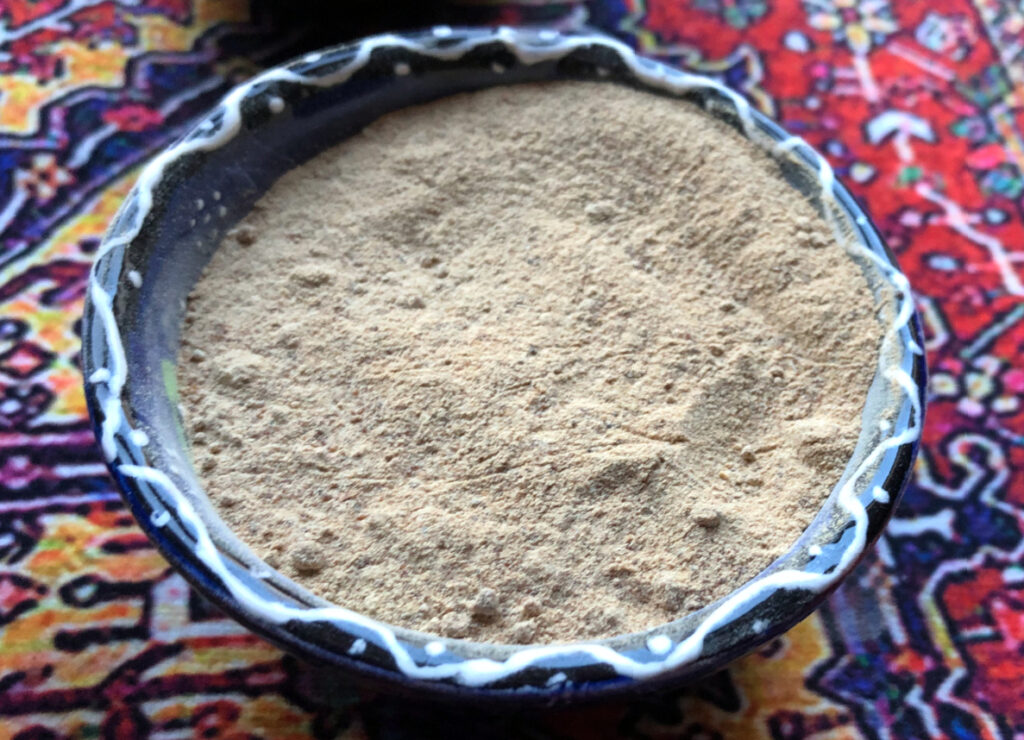A member of the Terminalia family, amlaj (Emblica officinalis Gaertn., Phyllanthus emblica L.) is known in English as ‘Indian gooseberry’, as well as by its Hindi and Sanskrit names of, respectively, amla (‘sour’) and amalaki, from which the Arabic word is derived (via the Persian (امله, āmula/amla).
The term ‘myrobalan’ goes back to Greek words for ‘(fragrant) oil’ and ‘acorn’, though the substance was unknown to either the ancient Greeks or the Romans. It is the (dried) fruit of a tree originating in India (or China) from where it was imported by Arab traders already in the early Islamic period. The word is also the origin of ‘mirabelle’, a type of plum, in reference to the similarity in appearance when dried.
The use of amlaj for medicinal and dietary purposes goes back millennia, to ancient Indian (Ayurvedic) medicine, where it is still used to this day for its anti-inflammatory, digestive, antioxidant, and aphrodisiac properties, and even in the treatment of diabetes and cancers. Besides the fruit, the leaves, seeds, and oil are used in confections, pastes, and pickles. Today, it is most often sold in powdered form.
In the Muslim Middle Ages, it was also primarily used in medicine and pharamacology to strengthen the stomach, nerves, heart, and appetite, in the treatment of haemorrhoids, and for its aphrodisiac and anti-emetic properties. According to Ibn Sīnā (Avicenna), who remarked on the scarcity of amlaj, it is particularly effective to increase intelligence and memory. It was thought to be especially powerful when macerated in milk (ideally for a number of days), which was known as shīr (the Persian word for ‘milk’) amlaj.
Other members of the myrobalan family used for medicinal purposes are chebulic (or Kabul) myrobalan (halīlaj /ihlīlaj < Sanskrit harītak; Terminalia chebula) and belleric myrobalan (balīlaj < Sanskrit vibhītakī; Terminalia bellerica). They often occur together with amla in a compound, known as itṛīfal (إطريفل< Sanskrit triphalā), which is mentioned in Arabic pharmacological literature as a treatment for a cold stomach and haemorrhoidal pains, whereas the Tunisian physician Ibn al-Jazzār (d. 1004-5) referred to it as an established therapy for hernias. According to the Jewish scholar Maimonides (1138–1204) — the personal physician to Saladin (Salah al-Din) –, it strengthens the limbs, delays ageing and increases sexual potency. In Ayurvedic medicine, it is considered a potent compound, particularly for gastro-intestinal and ophthalmological complaints. Through Arab scholarship, the three myrobalans travelled to Europe very early on; the 12th-century compendium on women’s medicine, known as the Trotula, requires them in a number of recipes, and also mentions a trifera saracenica (‘the Saracen trifera’), alongside a trifera magna (‘greater trifera’).
Halīlaj (Indian hog plum) sometimes appears in Arabic as ijjās Hindī (إجّاص هندي, ‘Indian plum’) and comes in three varieties, yellow, black, and red. The black variety is considered the best, the yellow (Myrobalani citrinae) is smaller and has a more bitter taste. It is known for its high tannin content and has been used as a tanning agent. Black myrobalan also grows in Iran (where it is known as halīleh), and is used there in traditional medicine to treat a number of illnesses, including dementia and diabetes. In Indian (Ayurvedic/Unani) medicine, it is called the ‘King of medicines’, and is recommended for, amongst other things, its purgative and antioxidant effects.
There was very little non-medical use of myrobalans: amlaj occurs only in perfume blends, and black myrobalan is used only in a 10th-century Arabic cookery book, in recipes for an electuary (against colds and body aches) and a conserve (in date syrup and honey).
In his book on Indian spices, the sixteenth-century Portuguese physician Garcia da Orta, said that in India both the black and yellow mirobolanos were commonly used in cooking and in conserves, and also refers to a juice and syrup made from them.


